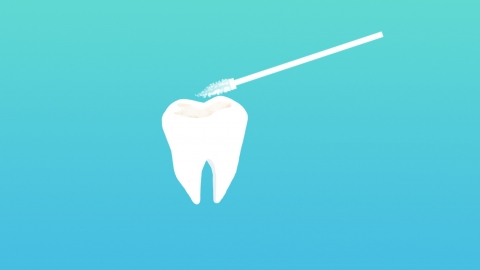What are the post-treatment care instructions after fissure sealing?
Generally speaking, the post-operative care for pit and fissure sealants includes protecting the sealant, maintaining oral hygiene, adjusting dietary habits, regular follow-up visits, and monitoring dental responses, all aimed at ensuring the effectiveness of the sealant and reducing the risk of dental problems. A detailed analysis is as follows:

1. Avoid chewing hard or sticky foods: Although the sealant has a certain degree of strength after curing, it is still advisable to avoid chewing hard foods such as nuts, bones, and hard candies, as well as sticky foods like rice cakes, chewing gum, and sticky chocolates with the sealed teeth in the short term. Hard foods may cause wear or chipping of the sealant, while sticky foods may adhere to the sealant and cause it to dislodge, affecting its protective effect.
2. Maintain good oral hygiene: It is essential to continue daily oral care after sealing. Brush your teeth properly with a soft-bristled toothbrush in the morning and evening, rinse your mouth promptly after meals, and use dental floss to clean the interdental surfaces when necessary. As the sealant only protects the pits and fissures of the teeth, bacteria may still accumulate on other surfaces. Good hygiene habits can comprehensively prevent caries and prolong the lifespan of the sealant.
3. Monitor short-term dental reactions: Some individuals may experience temporary tooth sensitivity after sealing, such as mild aching upon exposure to cold, hot, sour, or sweet foods, or a sensation of a foreign object during biting. These reactions are usually temporary and tend to subside on their own within one to two days without special treatment. If the sensitivity or discomfort persists or worsens, seek timely medical evaluation to rule out issues such as excessive sealant thickness or other dental problems.
4. Regular follow-up to assess the sealant: Follow-up visits should be conducted as recommended by your dentist to evaluate the condition of the sealant, typically every six months to a year. During these visits, the dentist will check for signs of wear, detachment, or marginal leakage of the sealant.
5. Avoid contact with sharp objects: It is important to avoid deliberately scraping the occlusal surface of the sealed teeth with sharp objects such as toothpicks or needles. Additionally, avoid using your teeth to bite nails or non-food items like bottle caps. Sharp objects or improper biting behaviors may compromise the integrity of the sealant, leading to gaps or detachment and reducing its protective function.
Proper post-operative care for pit and fissure sealants can help the sealant provide long-lasting protection and reduce the likelihood of tooth decay. At the same time, cultivating long-term good oral hygiene habits, combined with regular dental check-ups, can comprehensively maintain dental health and ensure normal chewing function.




